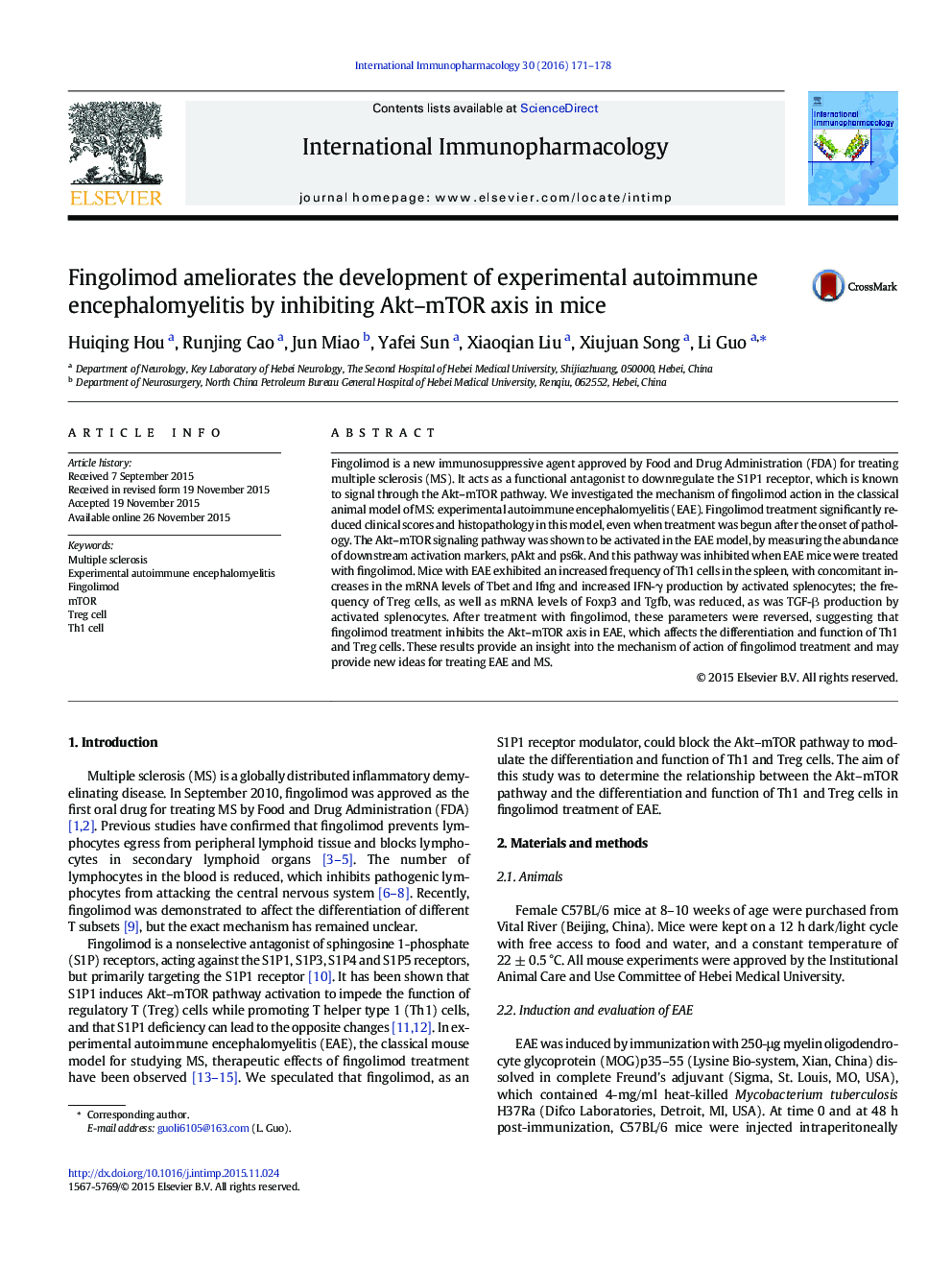| Article ID | Journal | Published Year | Pages | File Type |
|---|---|---|---|---|
| 2540362 | International Immunopharmacology | 2016 | 8 Pages |
•Fingolimod treatment significantly reduces EAE development in mice.•Fingolimod treatment on EAE may inhibit the Akt-mTOR axis.•Fingolimod treatment on EAE may affect Th1 and Treg function.
Fingolimod is a new immunosuppressive agent approved by Food and Drug Administration (FDA) for treating multiple sclerosis (MS). It acts as a functional antagonist to downregulate the S1P1 receptor, which is known to signal through the Akt–mTOR pathway. We investigated the mechanism of fingolimod action in the classical animal model of MS: experimental autoimmune encephalomyelitis (EAE). Fingolimod treatment significantly reduced clinical scores and histopathology in this model, even when treatment was begun after the onset of pathology. The Akt–mTOR signaling pathway was shown to be activated in the EAE model, by measuring the abundance of downstream activation markers, pAkt and ps6k. And this pathway was inhibited when EAE mice were treated with fingolimod. Mice with EAE exhibited an increased frequency of Th1 cells in the spleen, with concomitant increases in the mRNA levels of Tbet and Ifng and increased IFN-γ production by activated splenocytes; the frequency of Treg cells, as well as mRNA levels of Foxp3 and Tgfb, was reduced, as was TGF-β production by activated splenocytes. After treatment with fingolimod, these parameters were reversed, suggesting that fingolimod treatment inhibits the Akt–mTOR axis in EAE, which affects the differentiation and function of Th1 and Treg cells. These results provide an insight into the mechanism of action of fingolimod treatment and may provide new ideas for treating EAE and MS.
